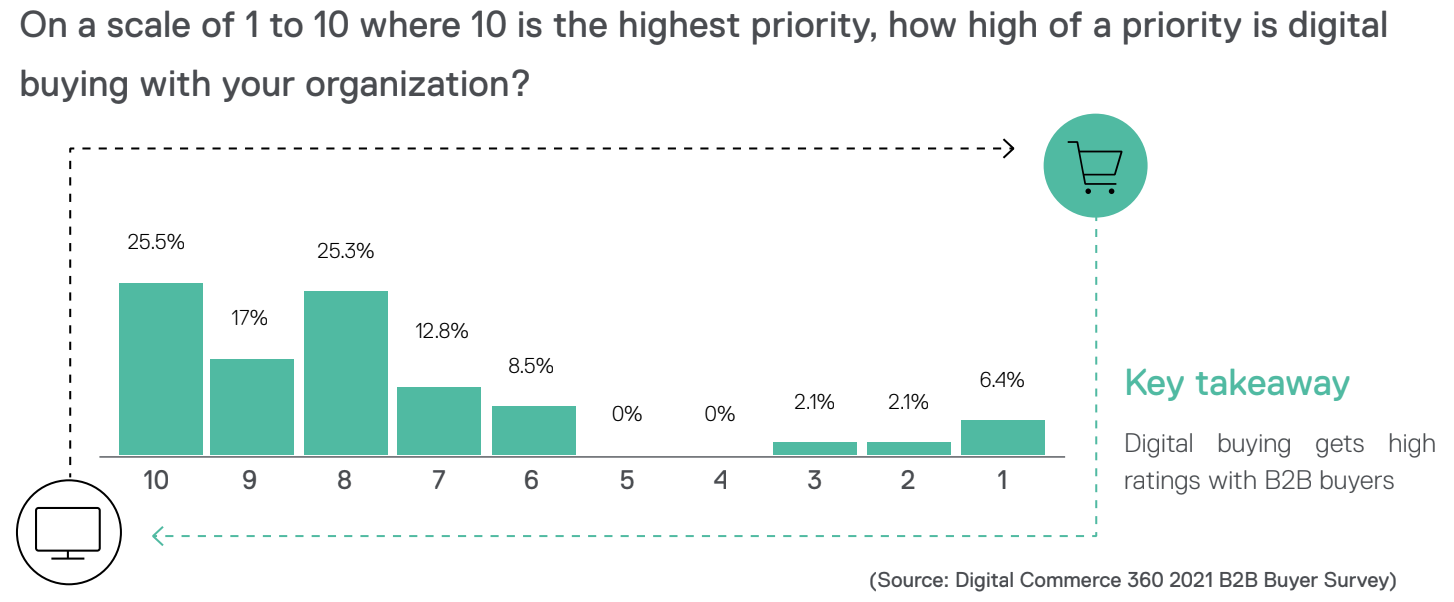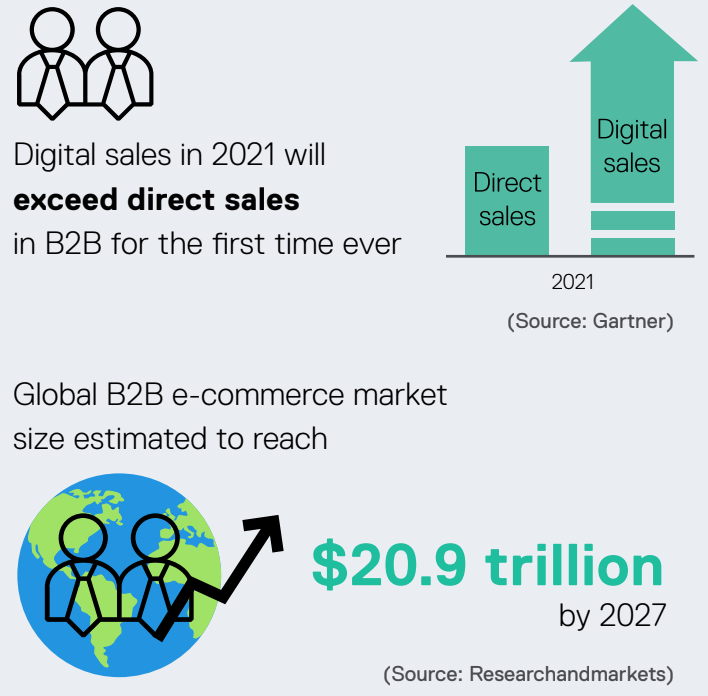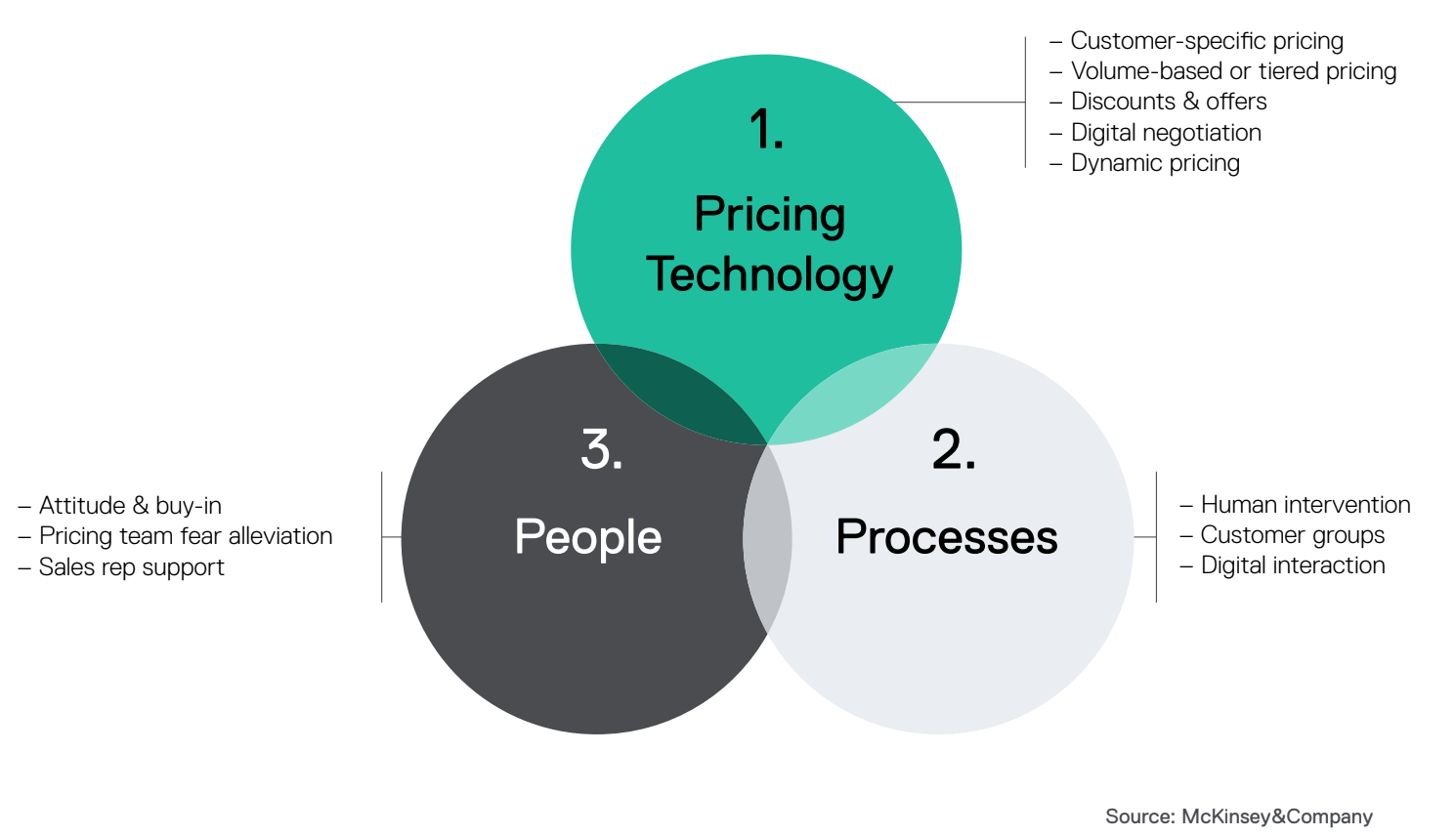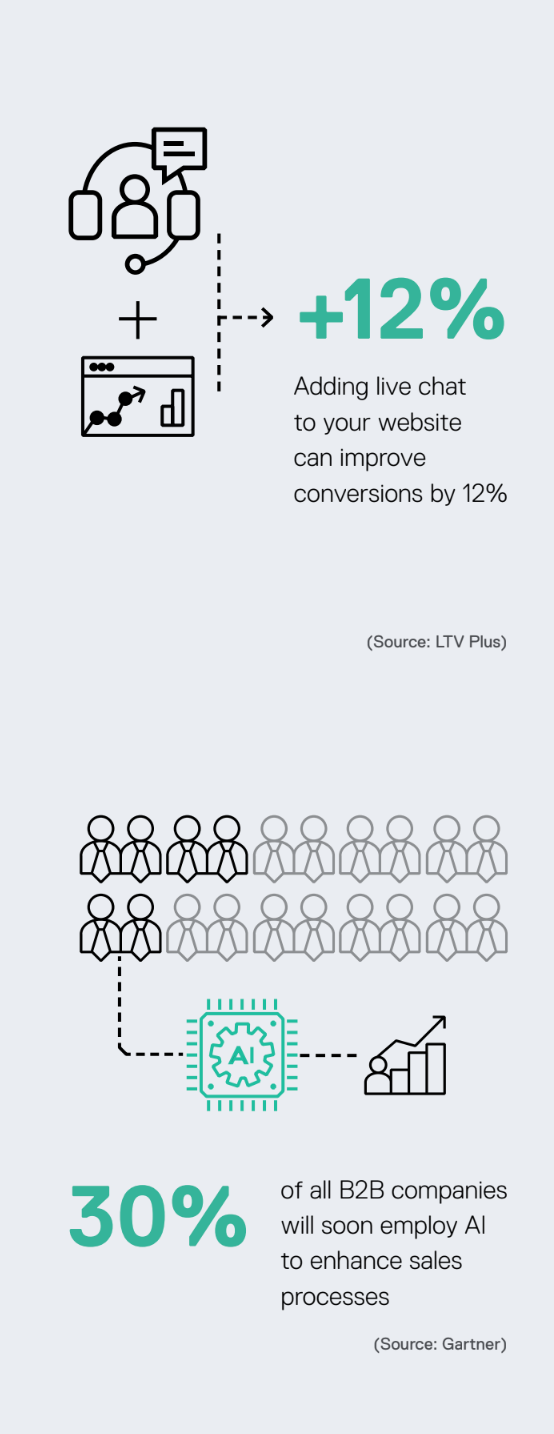3 Key Strategies to Deal With Complex Pricing in B2B E-Commerce
Master Sophisticated Digital Pricing in B2B by Leveraging Three Key Areas of Your BusinessPricing in B2B
Trying to understand the logic behind it can sometimes feel like attempting to see through a brick wall. Or at least, it’s been that way in the past. Digitization is forcing B2B companies to adopt a more B2C-oriented way of thinking, and yes, that includes a streamlined digital pricing strategy. Customers now expect a seamless user experience, whether they’re buying a new fridge for their home, or placing a business order for 5,000 X-Ray machines – and they want to see accurate price lists.
Here’s the conflict: pricing in B2B is extremely complex. It’s not just a matter of aligning offline and online channels (more on that later), but the fact that there are so many intricate variables involved, from changing daily costs of resources like metal to shipping costs.
So, what strategies are vital for successful digital pricing in B2B? There are three main dimensions to consider: pricing technology, processes, and people. Before we get into that, let’s first consider the common ground and challenges facing most B2B businesses considering pricing in the digital age.

Common Ground & Challenges With B2B Pricing
One of the biggest concerns around pricing is related to the fact that most B2B companies now considering digital pricing strategies have a combination of offline and online orders, which leads to consistency challenges across all channels. However, online orders are becoming increasingly important, as reported by Gartner , who stated that digital sales in 2021 will exceed direct sales in B2B for the first time ever. On top of this, pricing in B2B is often not only determined by individual price lists, but also additional rules and manual overwrites. When you add in relationship- based pricing negotiations with sales reps, digital pricing can feel like an insurmountable mountain to climb.
Another major fear we often hear from B2B customers is that they can’t possibly make their prices visible online, or their competitor will immediately undercut them. Here’s an uncomfortable truth bomb – your competitors already know your prices 99% of the time. Think about it for a minute. Isn’t your pricing team already using competitor data to inform your own pricing? Acknowledge the fact that there are risks related to transparency, including resellers offering products on marketplaces for a lower cost, but accept that the risk is worth the reward. According to ResearchAndMarkets.com , the global B2B e-commerce market size is estimated to reach $20.9 trillion by 2027. That’s a very big pie that your business could have a piece of, but you’ll only be a success story if you’re not afraid to innovate and modernize.
However, the two main challenges facing digital
pricing in B2B really come down to the following:
- How to replicate traditional contractual pricing, including price adjustments and consistency.
- The question of whether to adopt “real- time” dynamic pricing or ERP-driven pricing. Both can lead to a significant performance hit and bad customer experiences, but allow for a more modern data-driven approach.
It’s not all negative, however. Digitizing pricing is the perfect opportunity to streamline convoluted pricing rules and modernize existing business processes.

The Question of Dynamic Pricing
Should your business be implementing dynamic pricing, a strategy that utilizes real- time supply and demand to set prices? You’ve most certainly experienced it on the customer end when booking a hotel or a flight as travel booking websites have utilized dynamic pricing for years. In B2B, it’s typically used in conjunction with pricing analytics software, as it relies heavily on utilizing a large quantity of data. Critics of dynamic pricing point out the risk of arbitrage and marketplaces like Amazon forcing vendors to constantly lower prices to stay competitive.
However, a report from Forrester suggests that dynamic pricing in B2B boosts profitability by 25% while IDC forecasts that 20% of B2B e-commerce transactions will involve some type of dynamic pricing within a few years. More and more businesses are shifting towards dynamic pricing, so those companies who dare to be brave and adopt dynamic pricing strategies will reap the rewards, while B2B companies sticking their heels in the mud could be left behind.

1. Technology for Successful Digital Pricing
Like with any form of digitization in business, technology is your friend, not your enemy. While your digital pricing requirements might be complex, the technology you implement to solve these challenges should make the lives of your pricing team easier, not tortuous.
To get started, B2B commerce companies digitizing pricing should first be aware of the myriad capabilities available, all of which help address the first key challenge. The first important dimension is customer-specific price lists based on contractual agreements – this means that two different customers can log into your e-commerce system but see only their specifically agreed-upon prices.
Then, you’ve got volume-based or tiered pricing based on quantities or order volume, just as you would in an offline environment. Price adjustments, discounts and offers, individual digital ‘negotiation’, and margin-driven pricing are all other important dimensions to consider. Last, but certainly not least, global market factors such as raw material cost and market fluctuations, etc. are important factors in successful digital pricing in B2B, all of which can be implemented into your strategy using dynamic or ERP-based pricing.
Don’t forget to think about your company’s overall goals and strategy when considering which pricing technologies are most relevant to your business model. For instance, if your overarching objective is to improve customer experience, then you should be considering capabilities that increase convenience, such as re-order automation or personalized recommendations.
2. Processes & Organization in Digital B2B Pricing
Like most robots, digital pricing still requires a human being to tell it what to do. One important example that requires human intervention is customer groups, i.e. manually defining and assigning each customer or criteria to a particular group. This needs to be regularly updated and overseen by a designated person or team.
Likewise, buyers can often only see digital pricing once they’ve become a customer and been assigned to a group. This means that the ‘request a quote’ function in your e-commerce interface remains important and necessary, and there should be a smart process in place which triggers action from your team (with further potential for automation).
Another important element to consider is the enablement of digital interaction or consultation in the form of live chat, AI bots, and call-back requests. Most digital commerce platforms include smart tools such as these to facilitate interaction between your company and the customer without the need of a salaried sales rep, saving your business time and money.

3. Managing People & Culture When Going Digital With Pricing
Attitude and buy-in are extremely important if you want to implement a successful digital pricing strategy in a B2B commerce environment. Many companies believe that they can’t digitize their pricing, simply because they don’t want to. The classic “automation/robots are taking away jobs” fear rears its ugly head, and people who’ve built careers on managing manual pricing worry that they will lose power or prestige within the organization. In fact, a pricing team and a competent manager at the helm are vital in a digital pricing strategy to drive and implement, and many companies have this role reporting directly to the C-Suite.
Next, you’ve got the sales reps – get them involved from the very beginning and utilize their expertise to make sure that they’re part of the digitization process, not against it. There is always a huge concern from B2B companies that going digital with pricing will upset customers and lose the company business. While, of course, there is a risk of losing some business by digitizing your pricing strategy in the short term, there is also a great deal of profit to be made in the long run. One well-known case which caused a huge buzz in the industry at the time was when a global tire manufacturer changed their pricing strategy overnight and went digital – they lost some customers due to the swap, but increased overall profitability. Sometimes, you’ve got to lose some to win some.
Align, Evolve & Succeed With Digital Pricing in B2B
No matter what strategies you implement to deal with complex pricing, the crucial thing is adopting a streamlined pricing process across all channels in the first place. And don’t forget the big picture. Just like in an orchestra where one instrument missing can disrupt the harmony of the tune, without all three dimensions – technology, processes, and people – your pricing strategy is doomed to fail.
Consider which technology meets all the requirements of your unique business case, and is able to handle the complexity within your pricing strategy. If you want to implement dynamic pricing, you’ll require a provider with the knowledge and tech stack to help you implement it. Evaluate whether you want a flexible approach that is able to adapt and innovate based on changing trends in B2B pricing, or if you’d prefer a simpler off-the-shelf option with limited wiggle room.
The right technology, plus the aligned mindset and processes will help your business to solve all your complexities with pricing. You’ll be amazed at how much more efficient and productive your digital pricing team will be compared to what you thought possible in the offline world. Overall, making smart decisions about your digital pricing strategy will ensure that your business is evolving with technology rather than pushing against it, and decreases your risk of being left behind in the dust.
Read Mastering the Complexity of B2B Pricing with Spryker Cloud Commerce OS here
Convinced that you need to implement this three-point strategy to solve your complex pricing problems but not sure which technology provider you want to go with? Thanks to dedicated pricing capabilities in the Spryker Cloud Commerce OS, wholesale and food trading industry specialist METRO is now able to offer mass-customized prices to each of its customers - taking into account several factors such as quantity, promotions, and customer lifetime value. Learn how other B2B companies like METRO solved complex pricing challenges with Spryker. Read nowAbout Spryker
Spryker is the leading global composable commerce platform for enterprises with sophisticated business models to enable growth, innovation, and differentiation. Designed specifically for sophisticated transactional businesses, Spryker’s easy-to-use, headless, API-first model offers a best-of-breed approach that provides businesses the flexibility to adapt, scale, and quickly go to market while facilitating faster time-to-value throughout their digital transformation journey. As a global platform leader for B2B and B2C Enterprise Marketplaces, IoT Commerce, and Unified Commerce, Spryker has empowered 150+ global enterprise customers worldwide and is trusted by brands such as ALDI, Siemens, ZF Friedrichshafen, and Ricoh. Spryker is a privately held technology company headquartered in Berlin and New York backed by world class investors such as TCV, One Peak, Project A, Cherry Ventures, and Maverick Capital. Learn more at spryker.com.